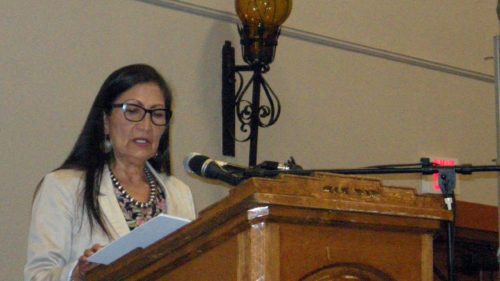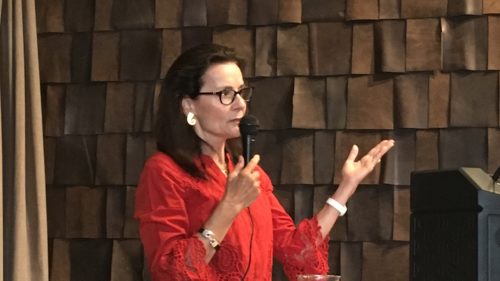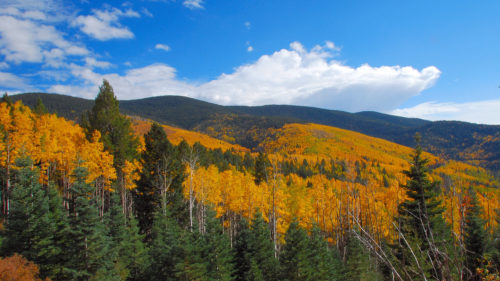I grew up traveling to Las Cruces as a youth to fish the Rio Grande with my Dad and Brother, with a sense of adventure and wonderment that was amplified by one of the world’s most majestic backdrops — the Organ Mountains.
I remember having the spires of this grand mountain range etched into my head when we drove away from the Mesilla Valley. The splendor of these mountains is hard to forget, and it draws in thousands of new tourists, visitors, and permanent residents to Las Cruces every year.
But the wonderment and magic of the Organ Mountains is not a recent development, people have been living with these mountains as their backdrop for thousands of years. And that’s just one of many reasons why protecting these mountains and the surrounding peaks as a national monument is incredibly important.
For me, these mountains are a symbol of home. They’re a symbol of community, and a symbol of freedom. They’re New Mexico.
For the Jornada Mogollon, a pre-historic Pueblo people that lived in the area and left their mark here for more than a thousand years, the mountains were perhaps a symbol of sustenance.
In the desert grasslands of the Mesilla Valley, adjacent to the Rio Grande, the Mogollon people likely hunted large game animal here — antelope, deer, and maybe even Elk. In fact, these traditions and practices are inscribed in the hundreds of petroglyph sites found throughout the Desert Peaks.
So it’s fitting that we too, as modern people, look to this land for hunting opportunities. Today, sportsmen and women can find healthy herds of Mule deer here, plentiful Oryx in the Organ Mountains range, javelina, Gambel’s quail, dove, and plenty of other desert critters to shoot with a camera instead of a bow or rifle. That’s part of the appeal of the monument — no matter how you engage with our public lands, you can likely do it in the Organ Mountains Desert Peaks National Monument. For example, in the monument, you can:
- Hike
- Hunt
- Go off-roading
- Rock climb
- Backcountry camp
- Bikepack
- Mountain bike
- Sightsee
- Public grazing
- Conduct research
- Explore archaeological sites
- Hanglide
.. and so much more.
And many of these activities, including hunting and grazing, are protected and preserved in the existing presidential proclamation that declared these beautiful mountain ranges and Chihuahuan Desert flats a national monument. These include the Potrillo Mountains (Potrillo is a type of horse), the Sierra de las Uvas (wild grapes once grew here), the Robledo Mountains (named after the first casualty of the Oñate expedition), and the Doña Ana Mountains (named in honor of a Spanish matron). These ranges not only collectively protect our unique Indigenous, Spanish, Mexican, and American history in New Mexico, but also provide important wildlife habitat and corridor connectivity.
The New Mexico Wildlife Federation believes it’s incredibly important to protect not only the land and public access of the monument, but the heritage and integrity of the history that lives here — history that reflects a wide variety of cultures and traditions.
Over the last year, the New Mexico Wildlife Federation has played an important in protecting this special place, by organizing or participating in public events such as the Matanza for the Monument, the Apache Flats Family Dove Hunt, the Community Town Hall for Secretary Zinke’s visit, dozens of organized hikes, the Every Kid in a Park program, and many, many more.
We look forward to organizing more events in the Organ Mountains Desert Peaks National Monument and in the rest of the year and in 2018, highlighting more opportunities for sportsmen and women to hunt on our newest national monument.
To get involved or to participate in a future event on the monument, contact me at gabe@nmwildlife.org.



